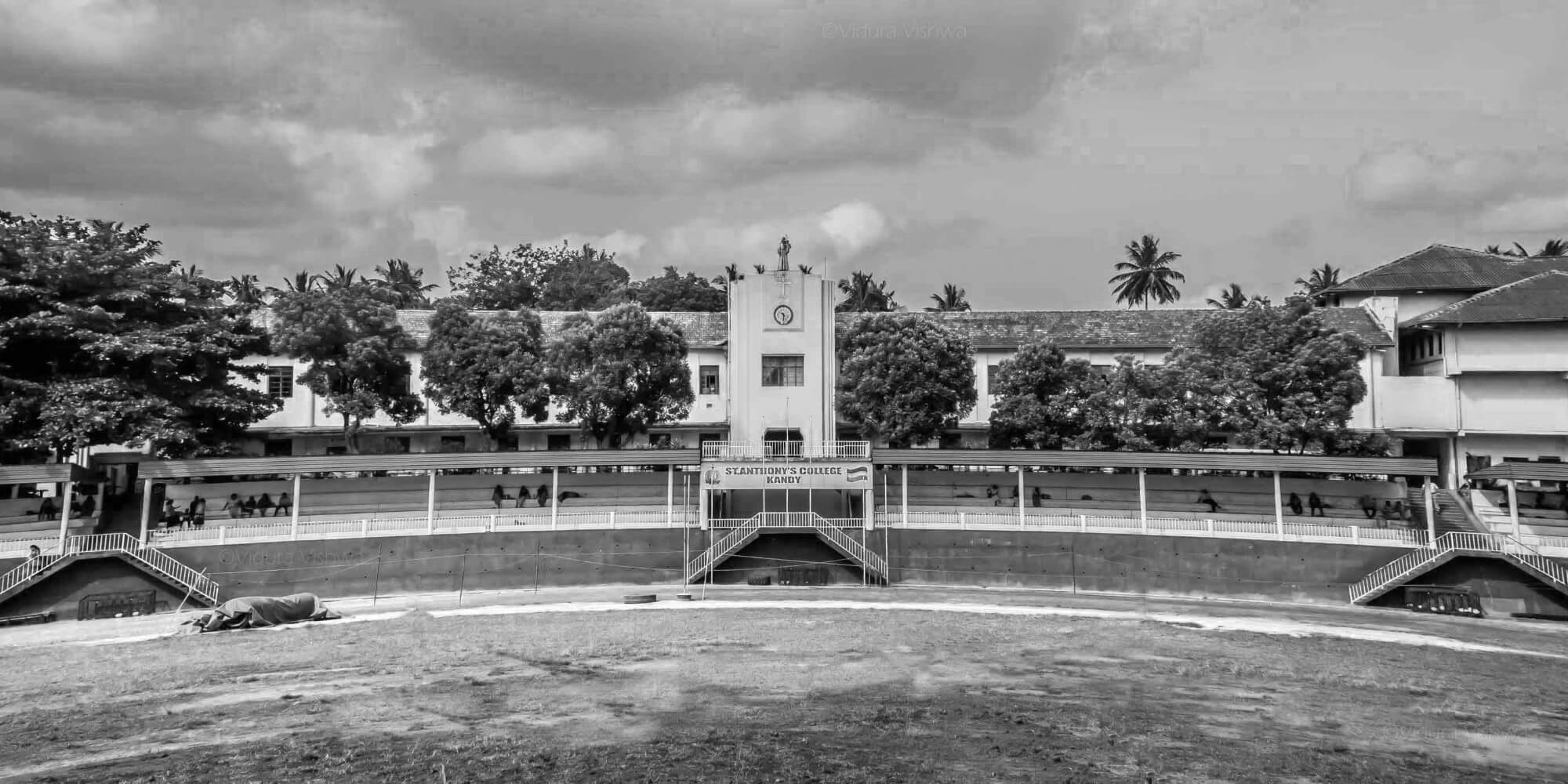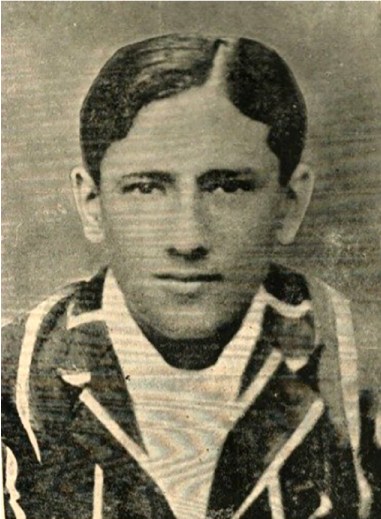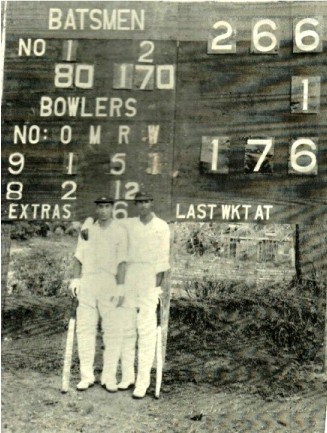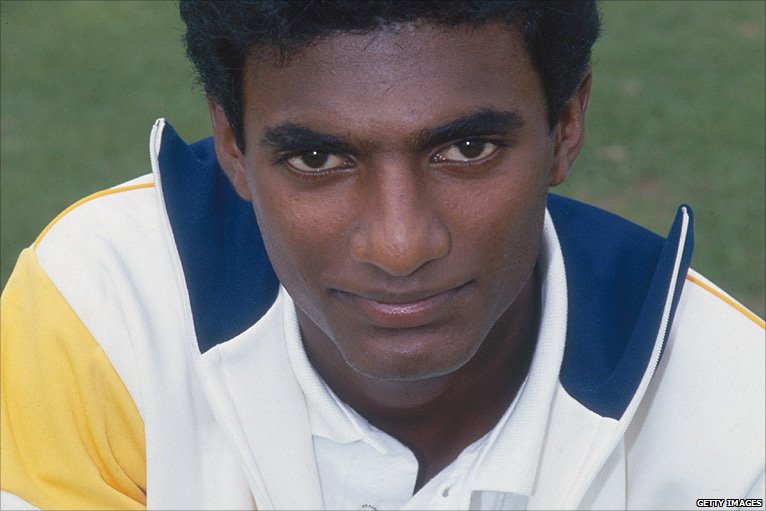Address
SACKOBA HQ,
St. Anthony’s College,
Kandy, Sri Lanka 20000
Email Address
secretary@sackoba.lk
editor@sackoba.lk
Address
SACKOBA HQ,
St. Anthony’s College,
Kandy, Sri Lanka 20000
Email Address
secretary@sackoba.lk
editor@sackoba.lk


I was associated with the General Manager of Catholic Schools for the Archdiocese, Rev Fr. Ivan Perera at the turn of the Millennium, and during that period there were issues that the schools experienced in relation to leadership and an erosion of values. All four of the leading Saints schools namely St. Anthony’s College Katugastota, St. Benedict’s College, St. Joseph’s College and St. Peter’s College have dealt with issues in their own way, but I believe reminding ourselves of our great traditions and the proud record of producing sterling individuals who have left their mark on different facets of society could be a way of helping us to find solutions which are compatible with the exemplary standards set in the past. What I find rather disturbing is the lack of a dialogue internally, or mechanisms in place, which could help us as good Christians to find solutions which are fair and encourage the building of harmonious relations.
I would like to celebrate the contribution of several products and some great leaders of the four schools, which we could perhaps brand the ‘The Big Four’.
St Benedict’s College is the oldest institution of the four. Although the Benedictine Institute was born in 1865, it in fact replaced the first Roman Catholic institution which was called the Roman Catholic Seminary, which catered to the needs of the Catholic students which commenced its scholastic work in 1839. At one stage of its development, St. Benedict’s was run by the OSB priests who later moved to St. Anthony’s College, which had been started by a Franciscan Priest, Fr. Zoppi in 1854. St. Joseph’s College was started in 1896 and St. Peter’s is the ‘baby saint’ having been started by Fr. Le Goc in 1927 as St Joseph’s Colombo South. I have traced this history as the links among the four schools is very clear and also our histories show that many old boys have been Principals of schools within the ‘big four’ and the Principals themselves, in the case of St. Joseph’s and St. Peter’s, have been transferred, engendering the blend of different school cultures. Curiously, since all the movements of Principals were from St.Peter’s to St.Joseph’s, the inference could be either that St Joseph’s was seen as a more important posting or alternatively that St. Joseph’s was seen as a retirement position? I leave it to the old boys to argue this out!
There have been some outstanding Principals and Teachers of all these schools, and they deserve to be saluted as the role models and the driving forces which have produced prominent leaders in political life, the clergy, the professions, as well as sportsmen who have been the pride of our country.
Curiously, since all the movements of Principals were from St.Peter’s to St.Joseph’s, the inference could be either that St Joseph’s was seen as a more important posting or alternatively that St. Joseph’s was seen as a retirement position? I leave it to the old boys to argue this out!
I must confess that this article lacks the in depth research which would have made it a proper study of the subject. It consists of my own knowledge and what I have gathered from two friends, namely, Dulip Jayamaha the eminent civil lawyer who has served in many key positions in the country and an expert in his field, and from Neil Wijeratne, the versatile author, sports journalist, lawyer and irrepressible raconteur. Dulip is a Peterite and Neil a Josephian. I have some information garnered from Neil de Votta’s Benedictine Memoirs, and some friends in relation to St. Benedict’s.
I may have made some egregious errors in excluding some real stalwarts of the four schools for which I crave indulgence, but I am sure the objective of this article and perhaps of the compilers is to create a platform for the alumni of the schools to share their own views, anecdotes and maybe lighter moments for the benefit of people like me, who in our well earned armchairs, now find time to reminisce and indulge ourselves with memories from the past!
We were taught by these great men that if one wished to lead that you also needed to listen to those who are mere followers and that one needs to develop trust and confidence in the ability to lead, to make a successful leader.
Let me start with the school I know the best – St. Anthony’s College. During our time we still had Italian OSB priests on the staff, one of the last to leave our shores being Fr. Simon Tonini, who was elevated to the position of the Head of the OSB Order on his return to Italy. The school is said to have been at its peak during the time of Rev. Fr. Lawrence Hyde. However our generation of Antonians, saw and were in awe of, Fr. Rosati, our Principal, who perhaps died an early death because of his zeal and the pace at which he worked. During his time a state of the art College Hall was opened in what was the Centenary Year. The Centenary Year was also hailed as a great year for the College with an outstanding performance against Trinity in the big match with Lafir and Stevens establishing a record for the first wicket. Incidentally, the College was coached at that time by an old Peterite, the popular announcer and sportsman, the late Maurice Perera.
We were also fortunate to have teachers who dedicated themselves to developing men of character. There were teachers who were all-rounders such as Robert Wright and George Macky who had excelled in sport and also had scholastic success.
There was George Denlow who was recognized as an authority on Geography and whose texts were used to train generations of students and teachers in the whole country. What we fail to appreciate is that qualities of leadership are learnt more by observing the behavior of superiors and teachers especially when the class, group or team is confronted with a complex problem. We were taught by these great men that if one wished to lead that you also needed to listen to those who are mere followers and that one needs to develop trust and confidence in the ability to lead, to make a successful leader. More recently, but commencing her career around the same time as the other teachers named, we had Dr. Jean Arasanayagam, the poet laureate who has been internationally recognized for her bold and brilliant writing. She taught us much more than proper English prose. What she left behind is a legacy of thoughts on ethnic peace and forging a common bond as Sri Lankans. We need to be thankful for the many teachers whom we looked up to as our leaders and path-finders. I must also salute one other Antonian Principal for his leadership and imparting a lesson on proper values. When I needed to study Latin shortly before leaving for the Law College, my Principal Fr. Robinson volunteered to give me special classes and sacrificed his precious time to coach me, He refused to take any payment and this made me realize that to be a teacher was a gift and that a monetary value could not be placed on the effort of imparting knowledge. These lessons we have carried with us into our careers and working life.
I know that there were many such teachers and principals in the other three schools and although constraints in terms of space prevent me from naming many, I am sure that the few named will be an occasion for all my friends from other institutions to say: ‘ but how about so and so’? It is my fervent hope that we remember with gratitude those who guided us and showed the way to get us where we are now.

St Anthony’s produced the first Governor General of the Republic Sir William Gopallawa who incidentally was a cricketer. It also produced several Cabinet members such as MD Banda, NH Keerthiratne (both sportsmen as well), and TB Illangaratne. In the field of law the Kandy school produced judges such as Chief Justice Victor Tennekoon, Chief Justice Asoka de Silva, Justice Dr. A R B Amerasinghe who was an internationally recognized jurist, and Justice Victor Perera. One other old Antonian who blazed a trail was Sir Cyril E.S.Pereira, QC, who was a Member of Parliament when it was a well respected position. Mr. Pereira was the founder of the Ceylon National Chamber of Commerce and the Ceylon Small Holders Association. He is also credited with initiating the first co-operative in Ceylon, the Premier Co-operative in Pettah.
Record breakers Jack Anderson who still holds the record for the highest score of 291 and his Bradmanesque season’s average of 92 – ACM Laffir and Ronnie Stephens who scored 266 for the first wicket.

Talking of St. Anthony’s and sport one cannot ignore the record breakers – Jack Anderson who still holds the record for the highest score of 291 and his Bradmanesque season’s average of 92 – ACM Laffir and Ronnie Stephens who scored 266 for the first wicket (Laffir played for Sri Lanka whilst still a school-boy) – Charlie Joseph who was School Boy Cricketer in two consecutive years, and of course Muttiah Muralitharan whose 800 Test wickets will be hard to emulate. I may also mention Priyantha Ekanayake who captained the Sri Lanka Rugby Team for ten years and also represented the Junior National Basketball team. He also played Cricket and was an Athlete. As I said the other school which I know reasonably well is St. Benedict’s. Bro. Alban Patrick was Director at St. Benedict’s during one of its best periods in sport and education. A disciplinarian he did much to mould students into proper gentlemen and outstanding citizens. The cricket team led by L P Rayan was a champion side. Bro. Lawrence who succeeded him was also an extraordinary leader. My father’s cousin, Bro. Cyril Alexander who was Director was also well respected and known to have been dedicated to his task of producing men of integrity.
Ven. Narada relates that it was Bro. James, his teacher who encouraged him to become a Buddhist monk.
I also had the privilege of knowing some of the teachers whom I met in the course of playing cricket for St. Anthony’s and through my parents who loved to entertain teams visiting Kurunegala. There was Mr. Gnanapragasam who was the Master of Games and who seemed to be a martinet, getting the best out of his teams and Mr.Herman Candappa, a great gentleman. In the 1950/60’s St. Benedict’s did produce some exceptional cricketers like Neville Cassie Chetty, L P Rayan, Lionel and Mervyn Fernando, Ranjit and Sunil Fernando, Elmo Rodrigopulle, Quintus Perera and too many others to name. I remember that St. Benedict’s at that time excelled in Football, Gymnastics, Basketball and Hockey. The College was blessed with some of the best coaches in the country.
The great Fr. Le Goc a former Principal of St. Joseph’s is a legend both for his leadership of the College as well as for being the foremost Botanist of his time, but his contribution to the legal profession is perhaps not well known!
I was unaware until I read de Votta’s magnificent compilation that the renowned Ven. Narada Maha Thero was a proud Benedictine. Ven. Narada relates that it was Bro. James, his teacher who encouraged him to become a Buddhist monk. St. Benedict’s also produced some outstanding professionals such as Sir Thomas de Sampayo,KC, Supreme Court Judge, C M Fernando, the First Ceylonese Crown Counsel, Vidyajothi Dr. ANS Kulasinghe, and well known academics such as Prof. AW Mailvaganam Prof Babapulle and more recently Prof. Nihal Amerasinghe. One cannot consider St. Joseph’s without thinking of the great Fr. Peter Pillai. He and his brothers were Benedictines. His brother Bro. Luke, who was an institution at St. Benedict’s, was described by the well known journalist and stage actor E C B Wijeyesinghe as a great teacher. Bro. Luke was the first Ceylonese Principal of St. Benedict’s and the first Ceylonese to head the FSC order in the Island. Their brother was Bishop Emilianus Pillai, Bishop of Jaffna. And they also had a sister who was a nun. Fr. Peter Pillai it is said had an extraordinary mind and had many scholastic records to his name. There were many great Sri Lankans produced by St. Joseph’s during his time. One product whom I was privileged to know well enough was the late Justice Mark Fernando who after a brilliant school career, followed, by a first class in Law at the University, originally became a much sought after lawyer and finally a judge whose judgments will remain a testament to his uncompromising adherence to fundamental rights and Christian values. Justice Fernando who was a fourth generation lawyer had the unique distinction of being the son and grandson of Supreme Court Judges. The contribution Justice Mark Fernando made to create opportunities for law students to secure employment was substantial and he will be remembered with gratitude by many who would not have access to jobs in the mercantile sector without programmes he initiated. Reading through the Book on the Supreme Court of Sri Lanka written by Justice ARB Amerasinghe, I came across a piece of history which is worth inclusion. The great Fr. Le Goc a former Principal of St. Joseph’s is a legend both for his leadership of the College as well as for being the foremost Botanist of his time, but his contribution to the legal profession is perhaps not well known! The history of the Supreme Court records that the following eminent lawyers were all students during Fr. Le Goc’s time – Sir Lalitha Rajapakse, KC, Minister, High Commissioner; GG Ponnambalam, QC; C.Thiagalingam,QC; C Ranganathan QC. Justice Hema Basnayake, CJ; Justice HNG Fernando CJ; Justices HWR Weerasuriya, AWH Abeysundera, Justice GT Samarawickrema and IM Ismail. There were 7 Queen’s Counsel who were his students at the Bar as contemporaries.
In recent times we have had many outstanding cricketers produced by St. Joseph’s including Angelo Mathews and Tissara Perera, who are currently icons for the budding cricketers in Sri Lanka.
But I would like to mention some cricketers of my time and three from the past. David Ardnt, I believe still holds a record in the Josephian- Peterite match. I knew him as a planter in Kurunegala who also did some coaching. He also played for Kurunegala Sports Club. Then there was Hector Perera, whose son Hector Junior also captained St. Joseph’s. I have watched Hector senior play for Kurunegala when he was well past his prime. He still displayed great skill and showed that in his heyday he must have, as he is credited with, been the best fielder in the country. Hector, Senior, made a tremendous contribution to promoting cricket in the North Western Province and for many years was the live wire of Kurunegala cricket. Kurunegala played Saravanamuttu Trophy cricket during his time. His team also included his two brothers Victor and Oliver, who also played for St. Joseph’s. The sporting genes of the Pereras’ is still evident through the outstanding rugby player and cricketer Chandrishan Perera, who started his schooling at St. Peter’s College. He is the son of Dr. Cyril Perera another brother of Hector Senior’s.
Another superb sportsman produced by St. Joseph’s was Fairlie Dalpathadu who even when he was past his prime could be graceful on the field and I have had the privilege of seeing Fairlie and his brothers Oscar and Merle play together in the same cricket team. They were also talented Tennis players. From my period in school, I remember with pleasure the feats of Tissa de Soysa, Priya Perera, Raja de Silva and Brian Perumal. I cannot forget Brian as he felled me with a bumper and I fell on the stumps and was carried into the pavilion which in the old days was pretty primitive and their sick room even worse!
As mentioned, it was Fr.Le Goc who was the father of St. Peter’s College and he was followed by Fr. Nicholas Perera who was Principal for sixteen years. Of the Peterite Principals, Fr. Wiratunga who was much respected served for 18 years and was brought back to act in 1967 and 68, after a lapse of over fifteen years. I was privileged to know Fr. Claver Perera who graduated as a laymen and then joined the Seminary despite the fact that he had already made a name as one of the Island’s most renowned tenors. Fr. Claver as a student was accompanied at the Piano by his school mate Ray Forbes who had an outstanding career as a diplomat, and in retirement provided exemplary leadership teaching English to rural, underprivileged children in the North Central Province.
One Peterite I cannot forget to my dying day is Tyronne Le Mercier who was not regarded as a batsman but somehow was inspired at Katugastota & pulverized us by collecting 230 runs At the latter stages, we were petrified and kept praying that he would not break our Jack Anderson’s record of 291 which would have resulted in our being remembered for the wrong reasons as having been responsible for an Antonian record being smashed and on our own grounds!
An outstanding lawyer from St.Peter’s, and arguably one of the best of his generation was H L de Silva, who was a UN Permanent Representative in New York for Sri Lanka during the crucial years when the war was going on. He was responsible for arguments which resulted in the de-merger of the North and East. He was regarded as the most outstanding Constitutional Lawyer of his era and was an adviser to the government. Remarkably, he spent his last days as a preacher! General Dennis Perera, who apart from having been the head of the Armed Forces was also subsequently a well accepted Diplomat, and a Chairman of a leading multinational, was a product of St. Peter’s.
One of Sri Lanka’s cricketers who put us on the global map was Clive Inman who played for St Peters establishing a record of a double century in the big match. For many years, Herbert I K Fernando was the number one wicket-keeper for the country. His brother Herman, who also played cricket, was the Senior Partner of the law firm of Julius & Creasy. One Peterite I cannot forget to my dying day is Tyronne Le Mercier who was not regarded as a batsman but somehow was inspired at Katugastota and pulverized us by collecting 230 runs! At the latter stages, we were petrified and kept praying that he would not break our Jack Anderson’s record of 291 which would have resulted in our being remembered for the wrong reasons as having been responsible for an Antonian record being smashed and on our own grounds! Some outstanding cricketers of my time from St. Peter’s were the Heyn brothers, Travis Fernando and Maurice Deckker. The Saints can be more than proud of their products. What is needed is a firm commitment that the great heights reached in the past are maintained. In order to do so we need to dedicate ourselves to protecting and upholding the values which were the bedrock on which these fine institutions were built. The loyalty of old boys of the four schools is greatly evident not only in Sri Lanka, but also all over the globe. The qualities which were instilled in us remain a lasting monument to the great teachers and principals who guided us. I wish that future generations will see the ‘Saints go marching on and on’!!
The writer is an Old Antonian who played Cricket in the 1960’s. He is an Attorney at Law and a past Director General of the EFC and a Senior Employers Specialist of the ILO. He is currently a Board member of several Companies.
Source: https://quadrangle.lk/the-saints-blaze-a-trail-across-the-island/